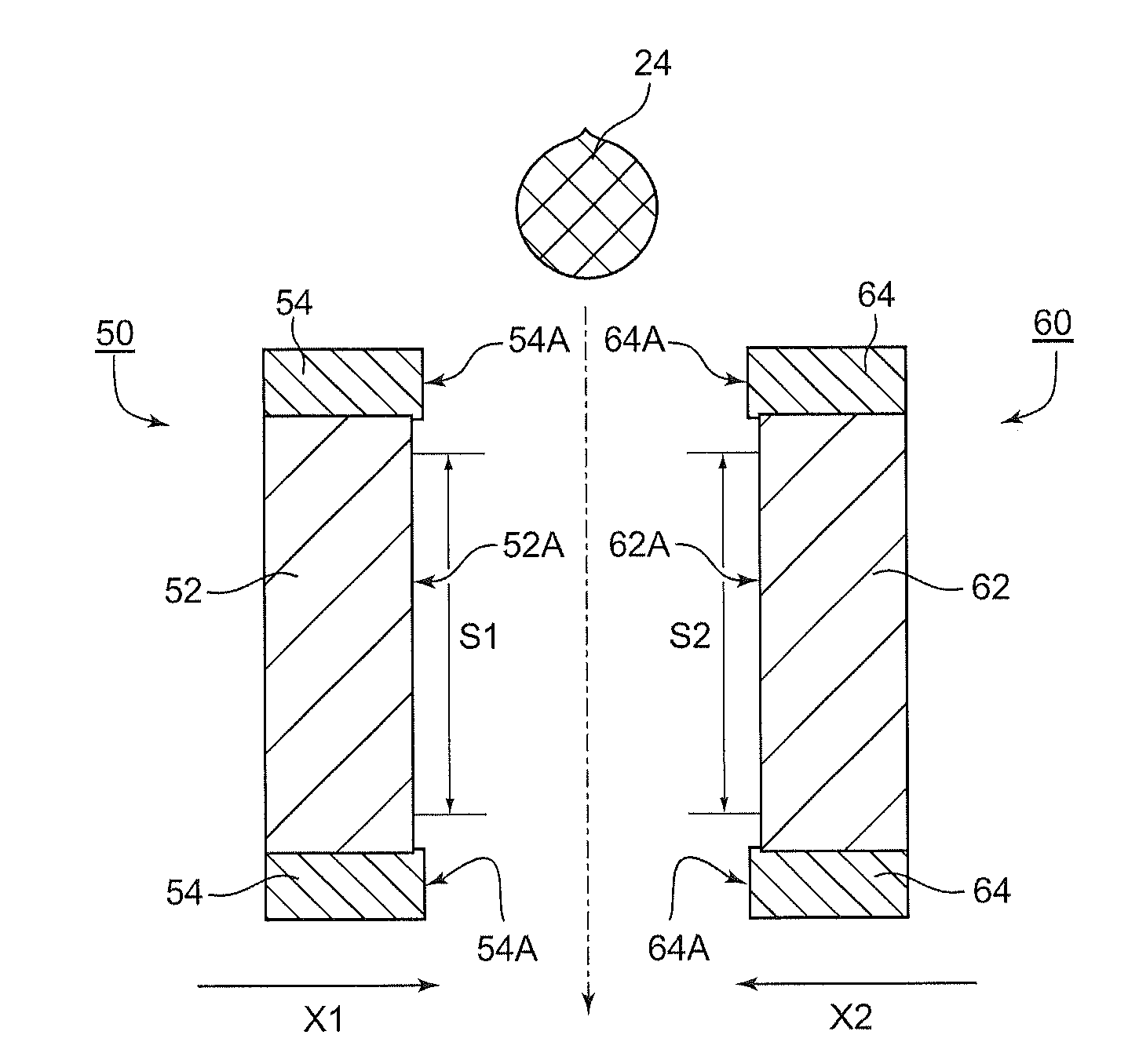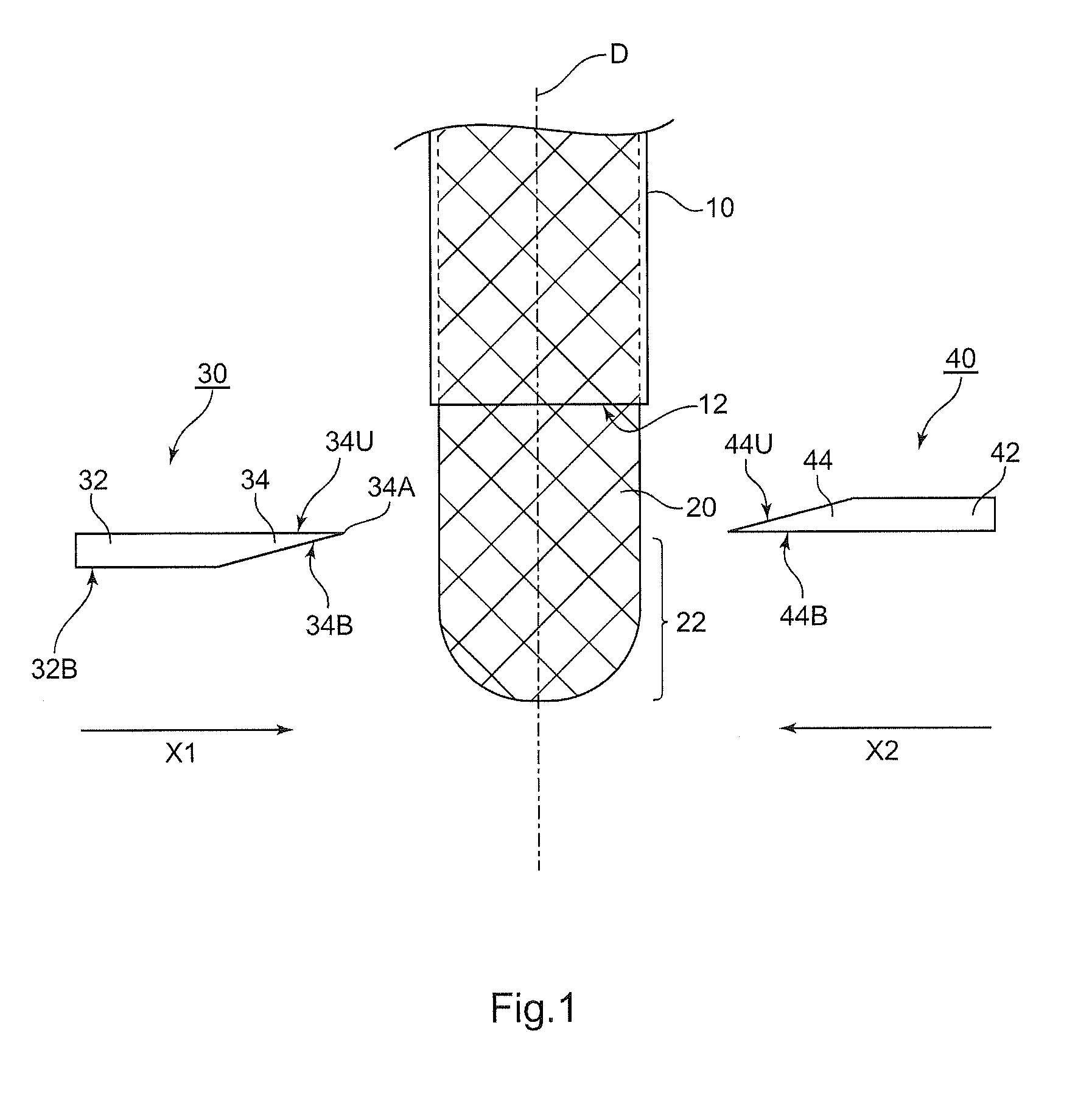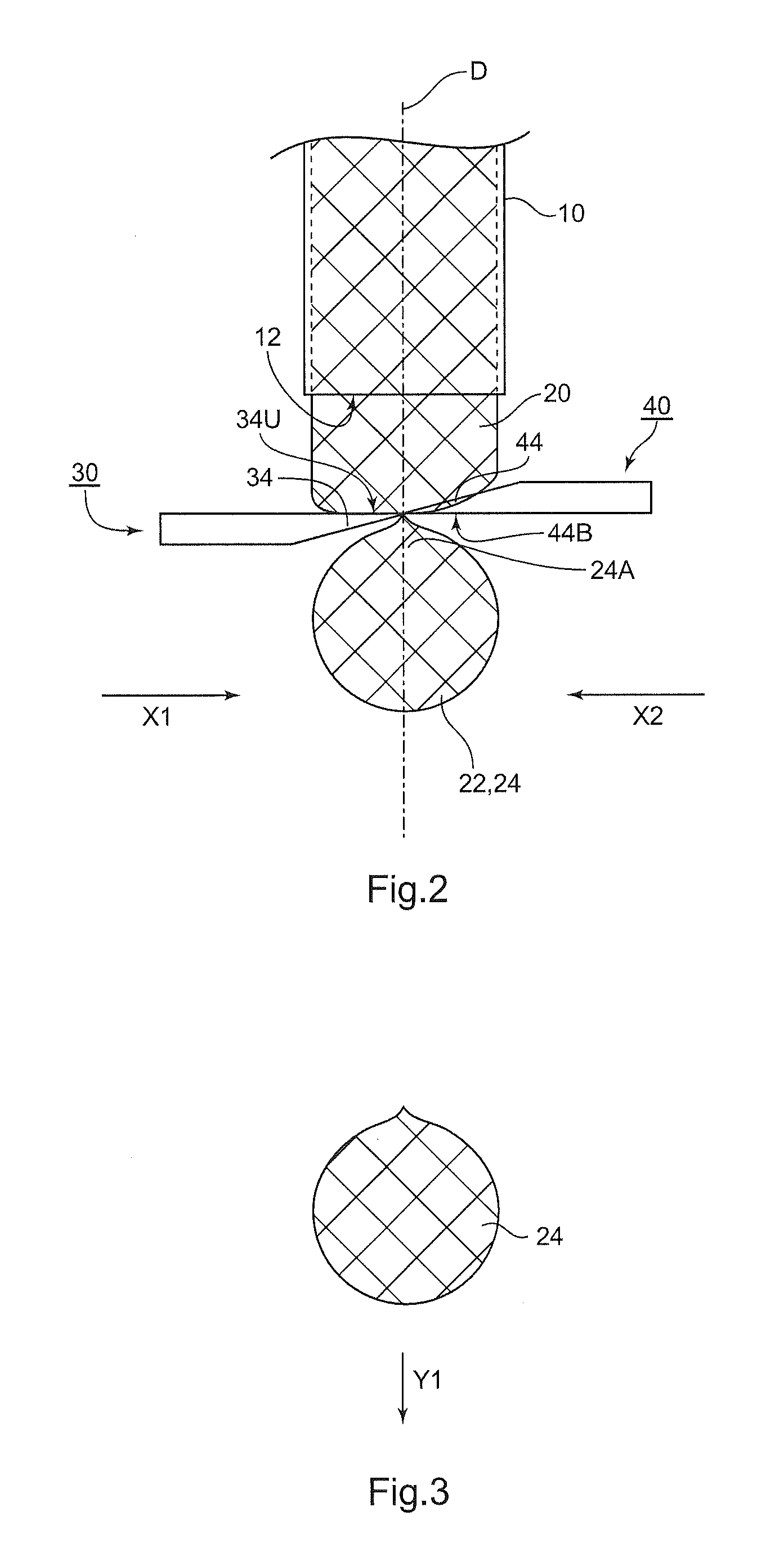Manufacturing method of glass blank for magnetic recording glass substrate, manufacturing method of magnetic recording glass substrate and manufacturing method of magnetic recording medium
a manufacturing method and technology of glass blank, applied in glass rolling apparatus, glass tempering apparatus, instruments, etc., can solve the problems of cracks on the surface of glass, increase in processing time, and large man-hours for manufacturing a magnetic recording medium substrate, and achieve excellent thickness deviation and flatness, good heat resistance, and small crack defect
- Summary
- Abstract
- Description
- Claims
- Application Information
AI Technical Summary
Benefits of technology
Problems solved by technology
Method used
Image
Examples
examples
[0191]Hereinafter, the present invention is described in more detail based on examples, but the present invention is not limited to the following examples.
[0192]
[0193]Materials such as oxides, carbonates, nitrates, and hydroxides were weighed and mixed enough, yielding each blended material, so that glasses No. 1 to 13 listed in Tables 1 to 5 are obtained. Each blended material was fed into a melting tank in a glass melting furnace, was heated, and was melt. The resultant molten glass was transferred from the melting tank to a fining tank, and bubbles were removed in the fining tank. Further, the molten glass was transferred to an operation tank, was stirred and homogenized in the operation tank, and was caused to flow out from a glass effluent pipe provided in the bottom portion of the operation tank. The melting tank, the fining tank, the operation tank, and the glass effluent pipe were each under temperature control, and in each step, the temperature and viscosity of the glass we...
example b1
[0220]Glass blanks were manufactured by changing the press-molding time to the three levels of 0.2 second, 0.5 second, and 1.0 second in Example A1.
example c1
[0226]The glass blank manufactured in Example A1 was annealed to reduce or remove strain. Next, there was applied scribe processing on a portion that was to serve as the outer periphery of a magnetic recording medium glass substrate and a portion that was to serve as the inner periphery thereof. As a result of the processing, two grooves looking like concentric circles are formed outside and inside. Next, by partially heating the portions on which the scribe processing was applied, cracks are caused to occur along the grooves produced by the scribe processing, by virtue of the difference in thermal expansion of glass, and the outside portion of the concentric circle and the inside portion of the concentric circle are removed. As a result, a disk-shaped glass having a perfect circle shape is yielded.
[0227]Next, shape processing was applied to the disk-shaped glass by using chamfering or the like and its end surfaces were polished. Then, after a first polishing is carried out on the m...
PUM
| Property | Measurement | Unit |
|---|---|---|
| glass transition temperature | aaaaa | aaaaa |
| Young's modulus | aaaaa | aaaaa |
| viscosity | aaaaa | aaaaa |
Abstract
Description
Claims
Application Information
 Login to View More
Login to View More - R&D
- Intellectual Property
- Life Sciences
- Materials
- Tech Scout
- Unparalleled Data Quality
- Higher Quality Content
- 60% Fewer Hallucinations
Browse by: Latest US Patents, China's latest patents, Technical Efficacy Thesaurus, Application Domain, Technology Topic, Popular Technical Reports.
© 2025 PatSnap. All rights reserved.Legal|Privacy policy|Modern Slavery Act Transparency Statement|Sitemap|About US| Contact US: help@patsnap.com



